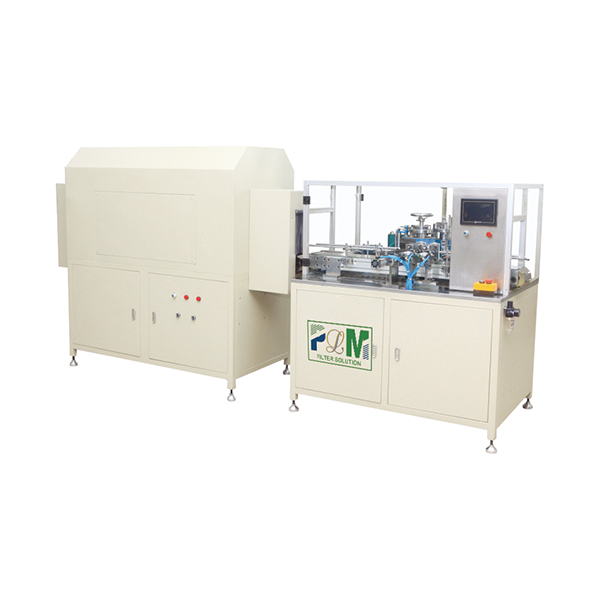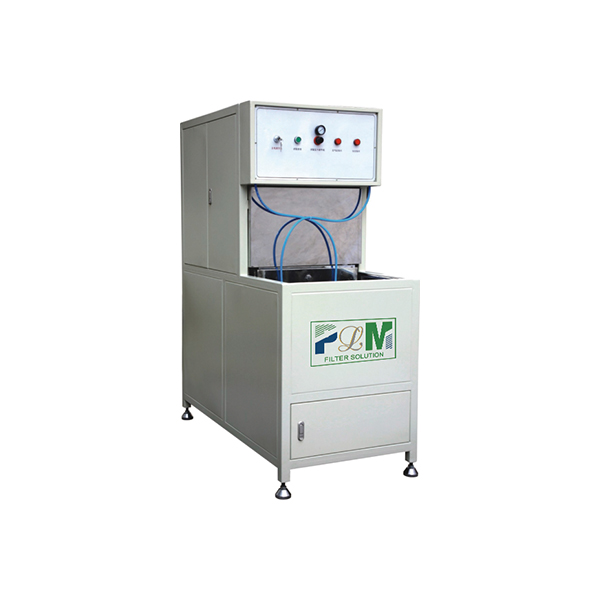Nov . 22, 2025 21:30 Back to list
Essential Guide to Filter Materials: Types, Applications, and Future Trends
Understanding Filter Materials: Why They Matter More Than Ever
If you’ve ever enjoyed a clean breath of air or a sip of fresh water, you’ve experienced the magic of filter materials at work. These humble substances quietly clean, protect, and preserve in industries that power our world and aid our health. But why does it actually matter, globally? Well, from industrial pollution control to humanitarian water treatment, filter materials act as unsung heroes that safeguard our environment and wellbeing. Understanding their nuances isn’t just academic — it's a key to innovation, sustainability, and safety in many sectors worldwide.
Mini takeaway: Filter materials aren't just industrial jargon; they're vital for cleaner air, safer water, and better health outcomes everywhere.
The Global Importance of Filter Materials in Industry and Beyond
When you zoom out to the big picture, filter materials come up as critical players in tackling global challenges. According to the United Nations, roughly 2.2 billion people lack access to safely managed drinking water. Meanwhile, industrial emissions continue to threaten air quality, with the World Bank reporting alarming pollution figures across emerging economies.
Here’s where filter materials step in: they help remove contaminants, particles, and impurities — be it in water, air, or even chemical processes. Yet, the bigger challenge remains in developing materials that cope with ever-increasing pollution and industrial demand while keeping costs manageable for widespread use.
Mini takeaway: The global push for cleaner resources and healthier living spaces leans heavily on advancements in filter materials.
What Exactly Are Filter Materials?
Put simply, filter materials are substances engineered to separate unwanted particles or contaminants from fluids (liquids and gases). Think of them as selective sieves, crafted to catch dust in air, bacteria in water, or even tiny pollutants from complex chemical mixtures.
In modern industry, their role is indispensable — ranging from HVAC systems ensuring breathable indoor air, to wastewater treatment plants protecting ecosystems, to manufacturing lines preserving product quality. Humanitarian efforts, such as disaster relief water purification, also rely heavily on efficient filter materials to restore safety rapidly.
Mini takeaway: Filter materials are precisely designed sieves enhancing purity and safety across sectors impacting daily life.
Core Characteristics of Effective Filter Materials
1. Durability
If a filter medium fails after a short period, it’s not just costly but potentially hazardous. Durability — resisting clogging, corrosion, or degradation — is crucial. Engineers often seek materials that maintain filtration efficiency over longer cycles to reduce downtime.
2. Scalability
Whether it’s a small domestic water filter or an industrial scrubber system, materials must perform consistently at varying scales. This adaptability ensures reliable filtration from local to mass applications.
3. Cost Efficiency
Raw materials, production costs, and maintenance all influence final cost. The best filter materials strike a balance between price and performance, making them accessible especially in resource-constrained regions.
4. Filtration Precision
The particle sizes filtered — ranging from visible sediment to microscopic pathogens — depend heavily on material structure and pore sizes. Precision enables customized solutions for industries like pharmaceuticals or electronics, where purity standards are stackingly high.
5. Environmental Compatibility
Using eco-friendly, recyclable, or biodegradable filter materials is increasingly important as sustainability concerns grow. This reduces waste burdens and aligns with global climate goals.
Mini takeaway: Durability, scale, cost, precision, and eco-friendliness define modern filter materials’ practical worth.
Where and How Are Filter Materials Applied Worldwide?
It sounds generic, but in reality, the scope is almost mind-boggling:
- Municipal Water Treatment: In cities like Cape Town, filter materials ensure potable water supplies despite drought and contamination risks.
- Industrial Air Filtration: Factories in northern China rely on high-grade filter media to cut particulate emissions per ISO standards.
- Medical & Pharmaceutical: Filter materials secure sterile environments in hospitals and vaccine manufacturing — where tiniest impurities can be deadly.
- Disaster Relief: After floods or earthquakes, portable water filters using advanced media restore emergency water safety, often saving lives.
- Agriculture & Food Processing: Clean water and air directly affect crop yields and food safety, especially in regions dependent on hydroculture or refrigerated storage.
Mini takeaway: From megacities to remote villages, filter materials form the backbone of clean air and water worldwide.
What Benefits Do These Materials Deliver Long Term?
It's easy to list technical specs, but the real value goes deeper:
- Cost Savings: Efficient filters reduce equipment wear and contamination, lowering replacement and maintenance expenses over time.
- Environmental Gains: Cleaner emissions and waste streams reduce ecological footprints — a win in the fight against climate change.
- Social Impact: Access to purified water or air drastically improves public health and human dignity.
- Reliability: Advanced filter materials mean fewer failures and unplanned outages — essential in critical infrastructure.
Emotionally, knowing your workplace or home is safeguarded by invisible layers of purity feels… well, reassuring. Like a vigilant guardian, filter materials enable trust and innovation.
Mini takeaway: Beyond numbers, filter materials deliver trust, health, environmental responsibility, and economic sense.
Looking Ahead: Innovations and Trends in Filter Materials
We’re seeing the frontier moving fast:
- Nanotechnology: Nano-fibers are pushing filtration precision to new limits, capturing particles previously untouchable.
- Smart Filters: Digital sensors integrated into filter media allow real-time monitoring, improving maintenance and lifespan management.
- Biodegradable Media: Materials that break down harmlessly after use reduce landfill impact — a crucial shift amid growing waste concerns.
- Energy Efficiency: Next-gen filters minimize pressure drops, lowering energy needs in industrial HVAC and water plants.
In short, filter materials are not static—they evolve with technology and environmental urgency.
Mini takeaway: The future of filtering lies in smarter, greener, and more precise materials, reflecting a world hungry for sustainability and innovation.
Overcoming Challenges in Filter Material Use
Of course, not all is perfect. Challenges include:
- Clogging and Fouling: Many filters get blocked quickly, requiring frequent replacement or cleaning.
- Material Costs: High-performance media can be pricey, limiting access in developing regions.
- Disposal Concerns: Non-biodegradable filters create environmental waste if not managed properly.
Innovators are answering these with clever coatings to resist fouling, open-source production methods to lower costs, and biodegradable polymers for eco-friendly disposal. Sometimes, the smartest solution is just better system design — think modular replacements and easy maintenance.
Mini takeaway: Every challenge inspires innovation and smarter filter material solutions.
FAQ: Your Questions on Filter Materials Answered
- What types of filter materials are best for water purification?
- Activated carbon, ceramic, and certain polymer membranes are widely used due to their ability to remove organic compounds, bacteria, and particles effectively. Selection depends on water quality and intended use.
- How do filter materials differ for air versus liquid filtration?
- Air filters usually focus on catching dust and particulates with fibrous or mesh structures, while liquid filters often need to address dissolved substances and microbes using membranes or granular media.
- Can filter materials be reused or cleaned?
- Many filters allow backwashing or chemical cleaning to extend life, but some specialized media require single use for safety or performance reasons.
- Are there eco-friendly alternatives to traditional synthetic filter materials?
- Yes, natural fibers, biodegradable polymers, and bio-based composites are emerging as sustainable options, balancing performance and environmental impact.
- How do innovations in filter materials support sustainability goals?
- They reduce energy use, minimize waste, and improve resource recycling, directly supporting UN Sustainable Development Goals related to clean water and responsible industry.
Product Specification Table
| Filter Material | Application | Particle Size Range | Lifespan (Approx.) | Cost Efficiency |
|---|---|---|---|---|
| Activated Carbon | Water & Air Purification | 0.5 – 50 microns | 3–6 months | Moderate |
| Polymeric Membranes | Reverse Osmosis & Microfiltration | 0.01 – 5 microns | 1–3 years | High |
| Ceramic Filters | Water Treatment & Sterilization | 0.1 – 10 microns | 2–5 years | Moderate to High |
Vendor Comparison Table
| Vendor | Product Range | Customization Options | Global Shipping | Sustainability Commitment |
|---|---|---|---|---|
| PureFilters Co. | Water/air filters, membranes | High | Yes | ISO 14001 certified |
| EcoClean Solutions | Biodegradable filters | Moderate | Limited | Zero waste initiatives |
| NanoTech Filters | Nano-fiber tech filters | Very High | Yes | Ongoing R&D for green tech |
Wrapping It Up: Why Filter Materials Are the Silent Champions
In a world rushing toward cleaner energy, safer water, and improved air quality, filter materials quietly make all the difference. They empower industries to meet strict standards, enable communities to access clean resources, and provide innovators the tools to build a more sustainable future. It’s odd how something so often invisible bears such visible impact.
Curious to explore the wide spectrum of filter materials and how they can elevate your operation? There are whole universes tucked into these unassuming layers — from cutting-edge nanotech to biodegradable fibers — waiting to be discovered.
Until next time, breathe deep, drink safely, and filter wisely.
References:
This is the last article
Filter Paper: Essential Guide for Industry and Global Applications
NewsNov.23,2025Essential Guide to Filter Materials: Types, Applications, and Future Trends
NewsNov.22,2025Efficient Long Pulse Dust Collector Pleated Filters for Superior Industrial Air Quality
NewsNov.22,2025Professional Air Filter Making Machine – Efficient Air Filtration Production Solutions
NewsNov.21,2025PLAB-6 A/B Glue System-Hebei Filter Man|Precision&Adjustable Speed
NewsNov.21,2025Essential Guide to Pure Water Treatment Filter Equipment in 2024
NewsNov.20,2025






